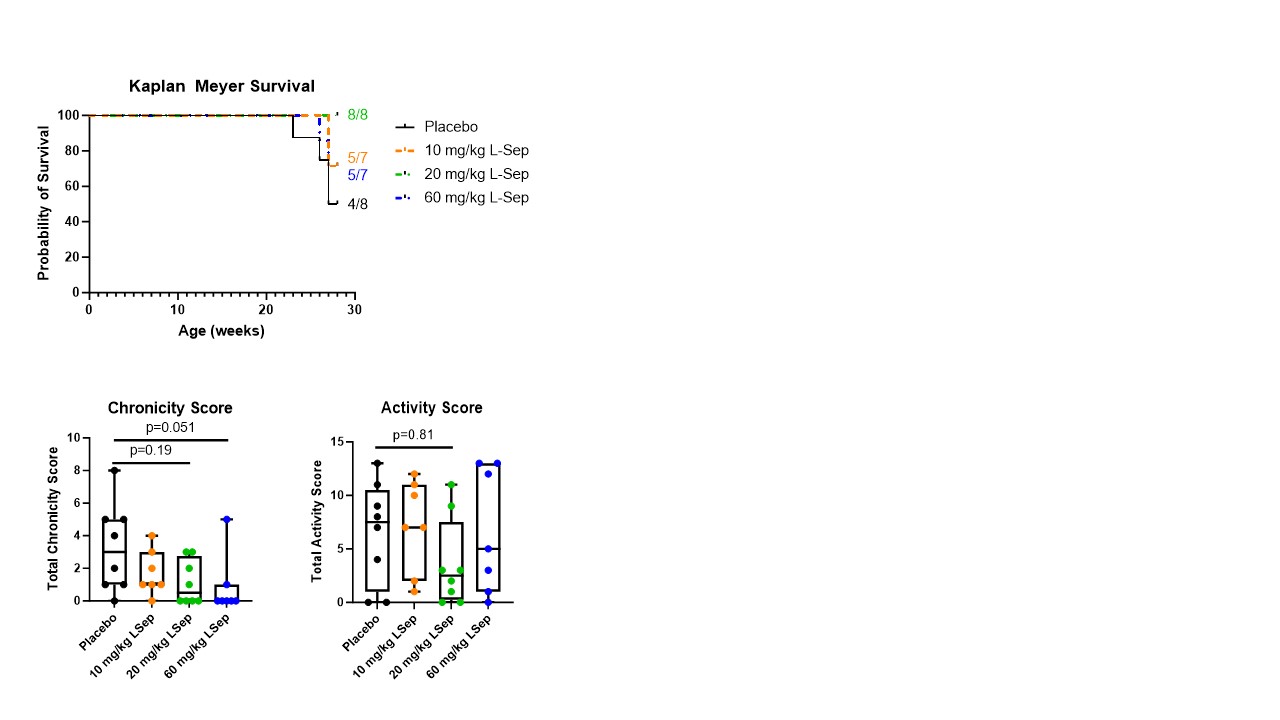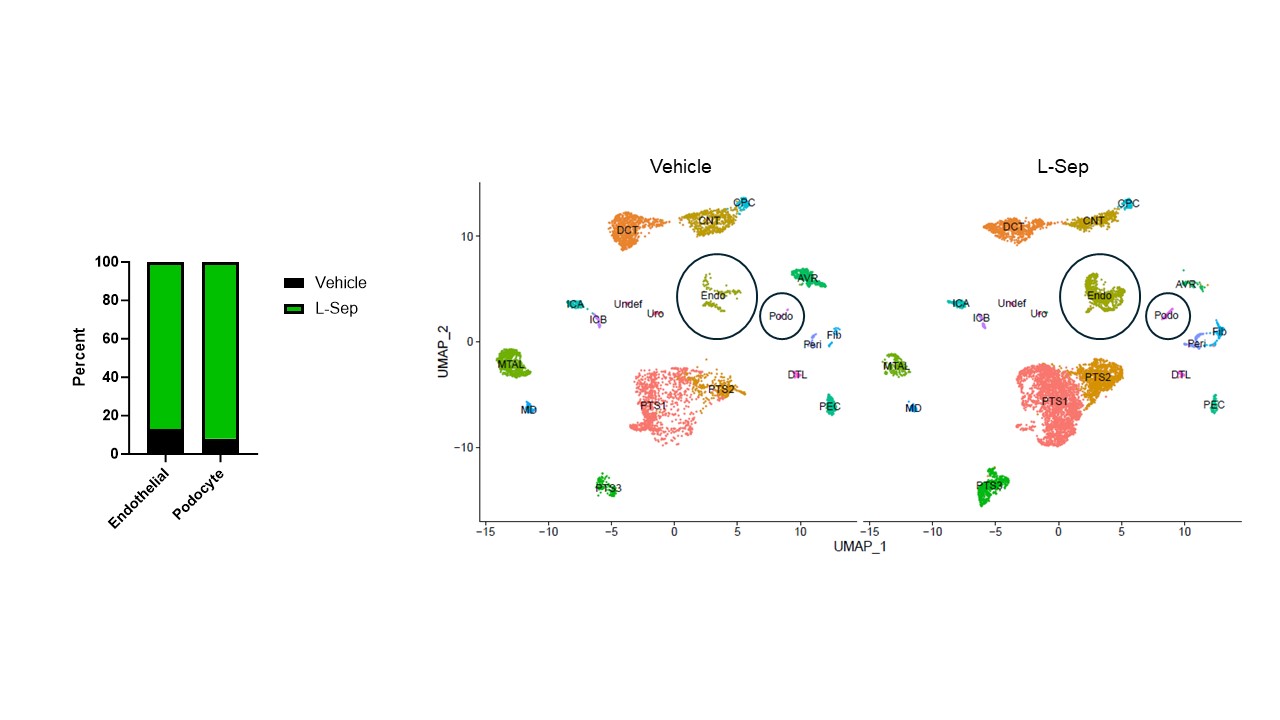Session Information
Date: Saturday, November 16, 2024
Title: SLE – Animal Models Poster
Session Type: Poster Session A
Session Time: 10:30AM-12:30PM
Background/Purpose: Lupus nephritis (LN) is characterized by chronic endothelial cell dysfunction (ECD), which occurs when endothelial nitric oxide synthase (eNOS) becomes uncoupled, producing harmful reactive oxygen species. Treatment with sepiapterin (L-Sep), which results in coupling of eNOS, has been shown to restore endothelial function in lupus serum-treated endothelial cells (ECs). The aim of this study was to determine whether L-Sep could improve outcomes in a murine model of LN in a dose-dependent manner and to explore effects of L-Sep on gene expression in glomerular cell types.
Methods: At 22 weeks of age, female NZM2410/J mice, a model of LN, were randomized into treatments groups of vehicle (n=8), 10 (n=7), 20 (n=8), or 60 (n=7) mg/kg/day L-Sep. 24 hour urine proteinuria was assessed weekly, and blinded histopathological grading of kidneys using NIH activity and chronicity indices, along with C3 and IgG renal expression were examined. Kaplan-Meier curves and log-rank test were applied to assess survival. One-way ANOVA with Dunn’s multiple comparisons test was used to determine differences in proteinuria.
Nuclei were extracted from the renal cortex of NZM2410/J mice treated with either vehicle or 20 mg/kg/day L-Sep. Single nuclear RNA sequencing (snRNA-seq) using 10X Genomics (v3.1 chemistry) was performed and differentially expressed genes FDR (padj < 0.05) were examined using Toppgene pathway analysis.
Results: NZM2410 lupus nephritis-prone mice receiving L-Sep showed enhanced survival (p= 0.025 for vehicle vs. 20 mg/kg L-Sep) as demonstrated by Kaplan-Meier curves and log rank test along with a trend toward improved renal function as measured by urine albumin/creatinine compared to those receiving vehicle at 4 weeks (p=0.07 for vehicle vs. 20 mg/kg L-Sep). Mice receiving 20 mg/kg/day L-Sep had lower renal chronicity (p=0.19) and activity (p=0.81) scores compared to vehicle.
snRNA-seq with cell clustering revealed increased percentages of endothelial cells in 20 mg/kg L-Sep treated mice compared to placebo (87% vs 13%), which was consistent with DEG analysis that showed differentially upregulated genes with L-Sep treatment were related to the M-type acetylcholine pathway, which is important in endothelial cell proliferation and repair and modulation of inflammatory responses. The most significantly downregulated genes with L-Sep treatment included those involved in selenium binding, glutathione peroxidase activity, and oxidoreductase activity, suggesting L-Sep has a pharmacodynamic effect on EC oxidative stress. Podocytes were also increased with L-Sep treatment compared to placebo (92% vs. 8%) and had increased expression of genes important in podocyte function, such as synaptopodin, and reduction in pathways that lead to podocyte barrier permeability, suggesting a protective mechanism by L-Sep.
Conclusion: This study suggests L-Sep, a drug that activates eNOS, may be beneficial in the treatment of LN, in part by ameliorating renal endothelial cell damage. snRNA-seq further implicates L-Sep as protective to the endothelium and involved in the antioxidant response.
To cite this abstract in AMA style:
Russell D, Mungaray S, Moradi S, Oates J. Targeting Endothelial Dysfunction in Lupus Nephritis: Effect of Sepiapterin, a Drug That Restores Endothelial Nitric Oxide Synthase Function, in a Murine Model of Lupus Nephritis [abstract]. Arthritis Rheumatol. 2024; 76 (suppl 9). https://acrabstracts.org/abstract/targeting-endothelial-dysfunction-in-lupus-nephritis-effect-of-sepiapterin-a-drug-that-restores-endothelial-nitric-oxide-synthase-function-in-a-murine-model-of-lupus-nephritis/. Accessed .« Back to ACR Convergence 2024
ACR Meeting Abstracts - https://acrabstracts.org/abstract/targeting-endothelial-dysfunction-in-lupus-nephritis-effect-of-sepiapterin-a-drug-that-restores-endothelial-nitric-oxide-synthase-function-in-a-murine-model-of-lupus-nephritis/


